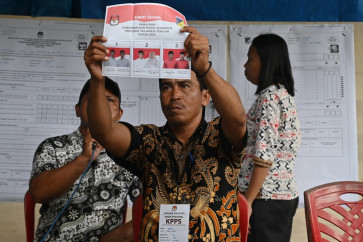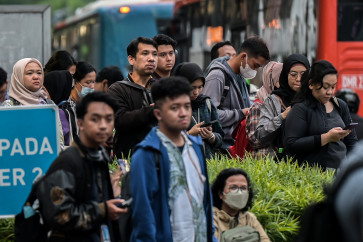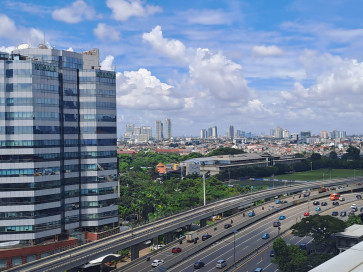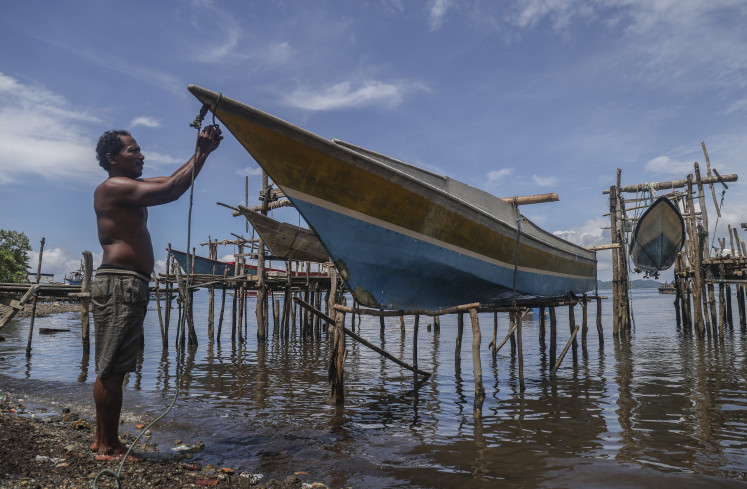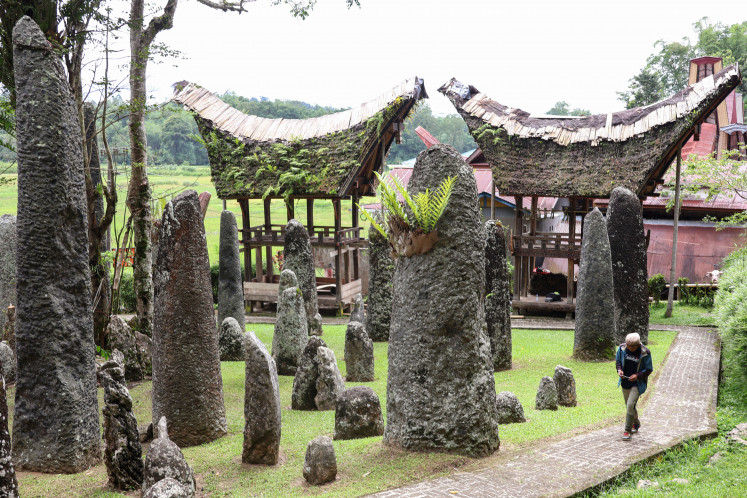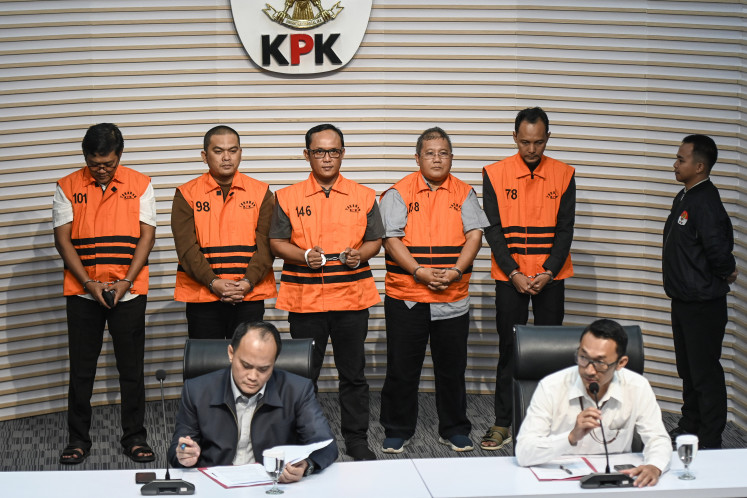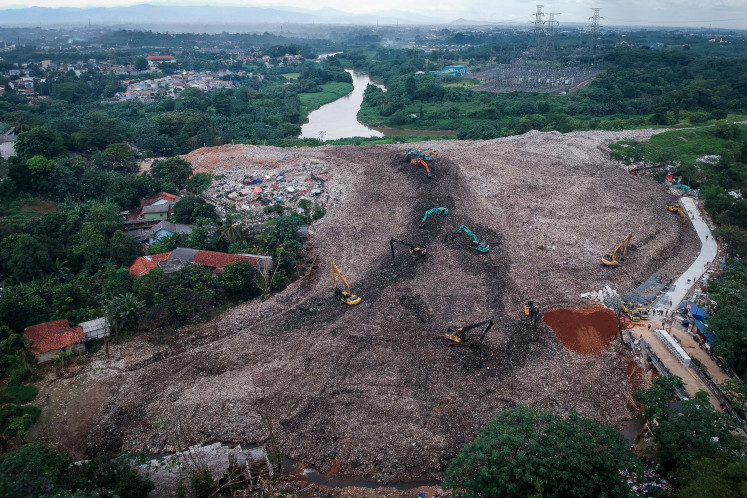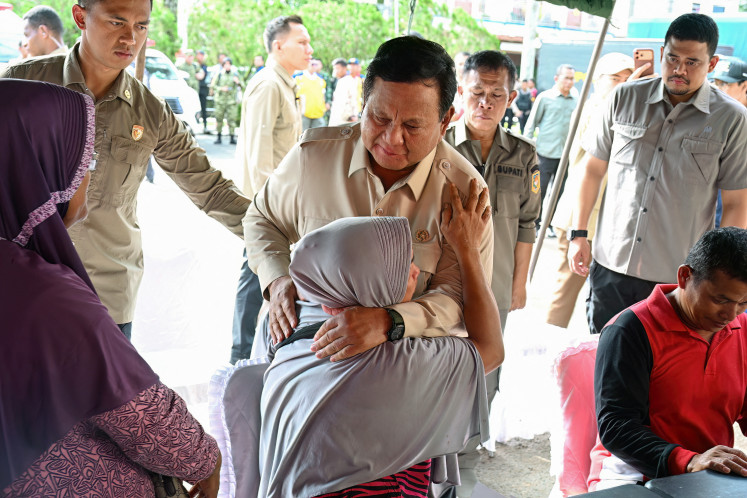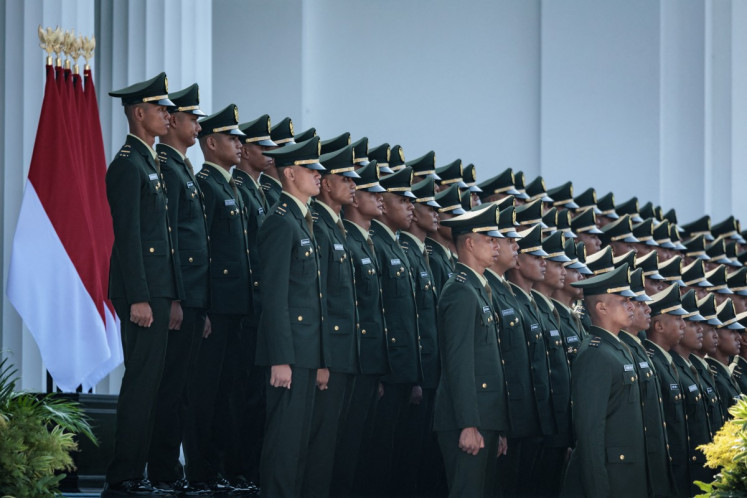Popular Reads
Top Results
Can't find what you're looking for?
View all search resultsPopular Reads
Top Results
Can't find what you're looking for?
View all search resultsIs Indonesia today at its richest? Ask children
Stunting in children and lack of water reliability are early warnings of whether a society protects its own.
Change text size
Gift Premium Articles
to Anyone
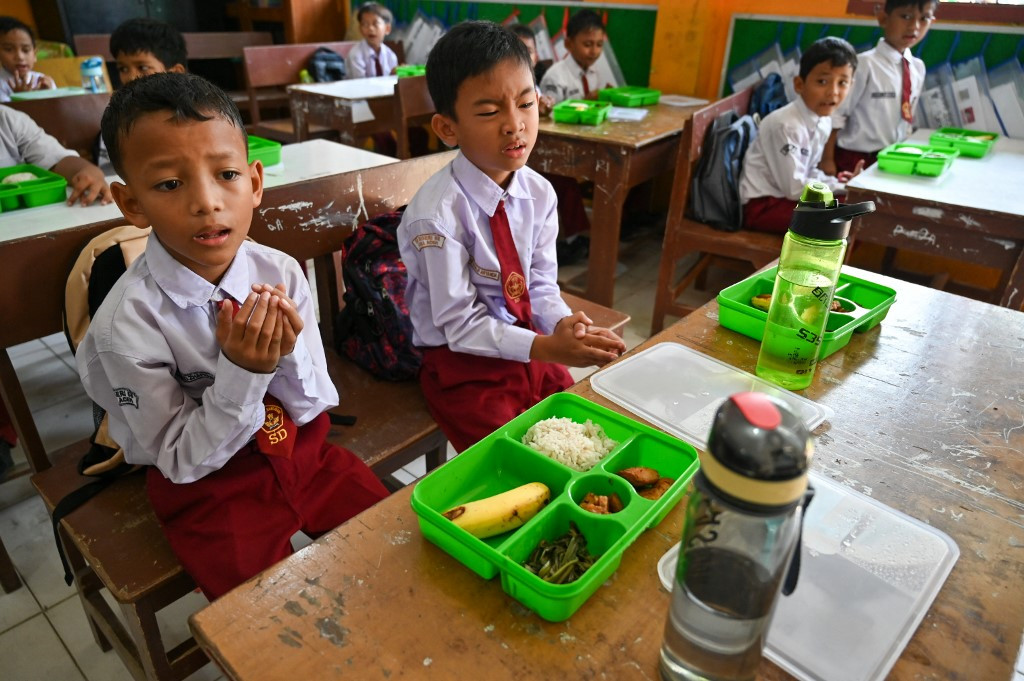 Students pray on Jan. 6 before eating their lunch on the first day of the free nutritious meal program at an elementary school in Banda Aceh, Aceh. Indonesia launched the ambitious US$4.3 billion free meals program on Jan. 6 to combat stunting caused by malnutrition, a key election promise of President Prabowo Subianto. (AFP/Chaideer Mahyuddin)
Students pray on Jan. 6 before eating their lunch on the first day of the free nutritious meal program at an elementary school in Banda Aceh, Aceh. Indonesia launched the ambitious US$4.3 billion free meals program on Jan. 6 to combat stunting caused by malnutrition, a key election promise of President Prabowo Subianto. (AFP/Chaideer Mahyuddin)
D
ays from our 80th Independence Day, it is worth asking what “rich” means to a nation that vowed in its Constitution “to promote general welfare and to educate the life of the nation.”
In March of this year, economist Ricardo Hausmann said Indonesia is at its richest point in its history. The spirit is fine but test it against two outcomes families feel daily: Stunting and dry-season water reliability. On the eve of this milestone, the question is moral as much as economic.
At a clinic, a midwife tightens a cuff around a toddler’s arm. The number is low. By noon, the neighborhood tap runs dry. Indonesia’s gross domestic product sits near US$4,900 per person, yet stunting is at 19.8 percent, and half our GDP comes from areas under high or severe dry-season water stress.
That is not “richest” to most families.
Yes, the economy is growing. The Organisation for Economic Co-operation and Development (OECD) projects Indonesia’s growth at 4.7 percent in 2025 and 4.8 percent in 2026. Foreign currency reserves stand at $152.5 billion (6.4 months of imports). Poverty is 8.5 percent based on our own assessment, but 68.2 percent under the World Bank’s upper-middle-income yardstick.
These are gains worth noting. But ask the mother whose child is underweight, or the family whose tap runs dry in August, if they feel richer.
Why these two measures? Housing and education matter, but they lag even after prosperity rises. Stunting in children and water unreliability are early warnings of whether a society protects its own.
Nutrition and safe water in the first few years shape brain growth, immunity and school readiness. Reliable dry-season supply determines harvests, clinics and hygiene. If these fail, the rest is window dressing. If they improve, everything else does too.
The stunting rate stood at 19.8 percent in 2024, with the government targeting a reduction to 14 percent in 2025. That is not an achievement — it is a plan. A truly rich country would already be locked on a single digit, with its slowest districts shielded from relapse.
Half our GDP comes from stressed water basins; by 2045, this portion could be two-thirds. Shortfalls can shave 2.5 percent off GDP. Reliability in the driest month is what households feel. Without it, crops fail, clinics strain and hygiene suffers.
When the scoreboard represents child growth and water reliability, $4,900 per person looks closer to lower income. Kenya, with per capita GDP of $2,200, keeps stunting in the high teens under water stress. Uganda, at roughly $1,070, records 26 percent stunting — only 6 percentage points worse than us — with a fraction of our income.
Judging by these two milestones alone, our outcomes sit nearer their realities than those of a truly rich nation. When countries with half or a quarter of our income can match or surpass us in keeping children nourished and taps running, “richest in its history” loses weight.
These are not isolated weaknesses. Energy and food security show the same fragility. Fuel imports represent 57 percent of consumption, liquid gas 77 percent — price shocks hit kitchens and clinics directly. Sugar is 73 percent imported, soybeans 85 percent, rice and corn about 8–9 percent each. A confident nation would not let core needs swing on global prices and shipping schedules.
If these are the real tests of richness, manage them as national priorities. Put stunting and dry-season water reliability at the top of dashboards. In systems terms, they are part of feedback loops — today’s changes shape tomorrow’s results. Publish them monthly. Make them nonnegotiable in cabinet meetings, provincial plans and state enterprise budgets.
If a program cannot show its contribution, it drops in priority. Start with people, then choose tools.
Fund basics as priorities, not afterthoughts. Protect maternal and child nutrition, primary healthcare outreach, sanitation, water system upkeep from budget raids. The infrastructure exists —puskesmas (community health centers), posyandu (neighborhood integrated health service posts), village funds, water utilities — but it must be managed optimally.
Tie funds to visible milestones: Fuller growth monitoring, fewer underweight infants, more homes with working latrines, more dry-season water hours. This drives the Nutrition–Water–Productivity Reinforcing Loop (R1): Healthier children grow into more capable adults, raising productivity and funding better services, which in turn improves child health.
Set leak-reduction targets, keep maintenance budgets steady, publish water-hour data by basin. Further, treat import-heavy household energy as a child-welfare risk. This tackles the Household Energy–Cost Balancing Loop (B1): Lower exposure to volatile import prices, ease pressure on family budgets and protect spending on food and water.
Real strength starts with feeding the child and keeping the water running.
Back at the clinic, the cuff will tighten again next month. In the dry season, the canal will drop again. A confident nation does not hide behind a flattering line; it makes a plain promise and keeps it.
On our 80th anniversary as a nation, let “richest” mean every family can keep taps running and their children fed — and let this be the year that promise is kept.
***
The writer is a Harvard Business School alumnus and affiliated alumnus of MIT Sloan School of Management. The views expressed are personal.


